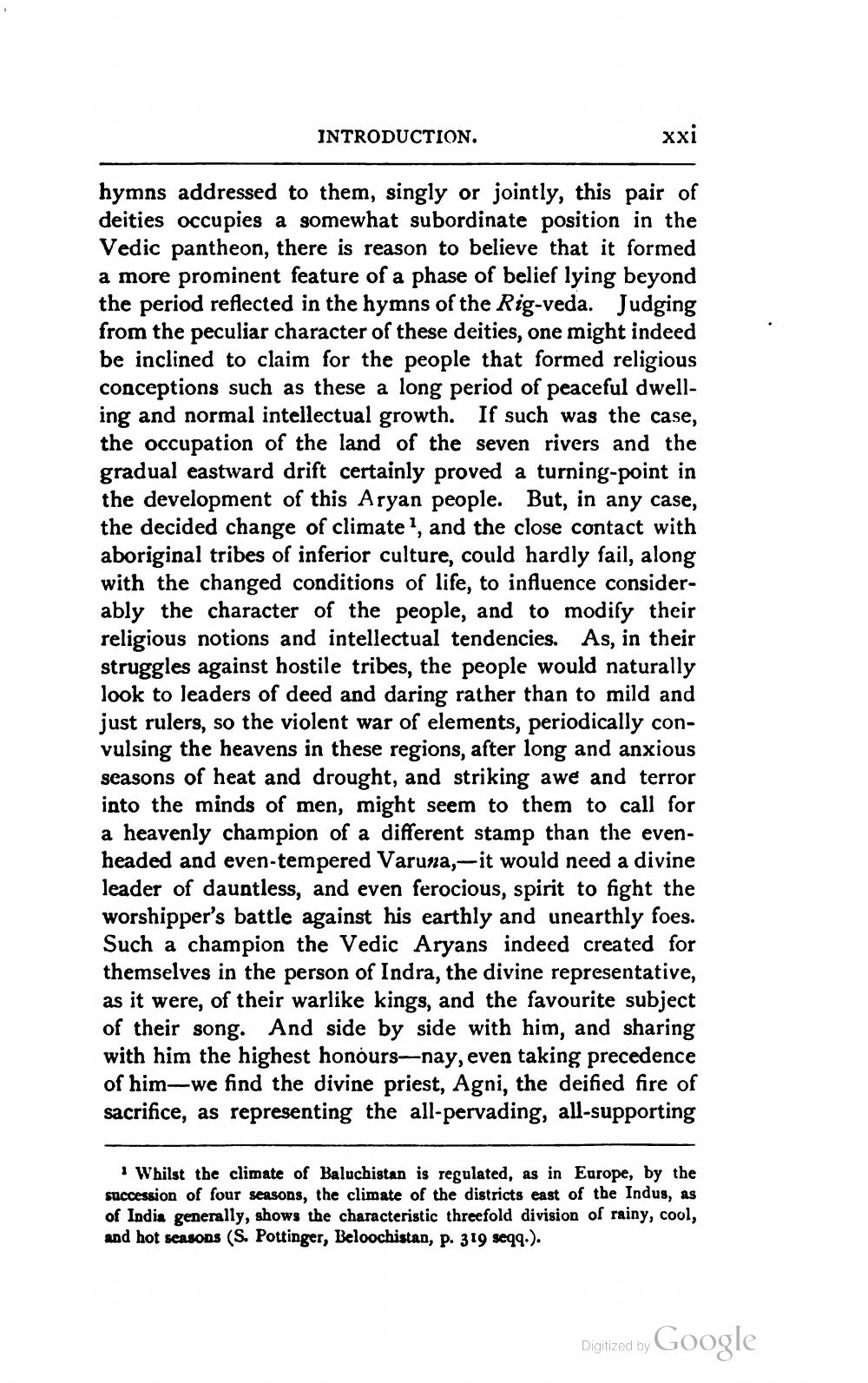________________
INTRODUCTION.
xxi
hymns addressed to them, singly or jointly, this pair of deities occupies a somewhat subordinate position in the Vedic pantheon, there is reason to believe that it formed a more prominent feature of a phase of belief lying beyond the period reflected in the hymns of the Rig-veda. Judging from the peculiar character of these deities, one might indeed be inclined to claim for the people that formed religious conceptions such as these a long period of peaceful dwelling and normal intellectual growth. If such was the case, the occupation of the land of the seven rivers and the gradual eastward drift certainly proved a turning-point in the development of this Aryan people. But, in any case, the decided change of climate1, and the close contact with aboriginal tribes of inferior culture, could hardly fail, along with the changed conditions of life, to influence considerably the character of the people, and to modify their religious notions and intellectual tendencies. As, in their struggles against hostile tribes, the people would naturally look to leaders of deed and daring rather than to mild and just rulers, so the violent war of elements, periodically convulsing the heavens in these regions, after long and anxious seasons of heat and drought, and striking awe and terror into the minds of men, might seem to them to call for a heavenly champion of a different stamp than the evenheaded and even-tempered Varuna,—it would need a divine leader of dauntless, and even ferocious, spirit to fight the worshipper's battle against his earthly and unearthly foes. Such a champion the Vedic Aryans indeed created for themselves in the person of Indra, the divine representative, as it were, of their warlike kings, and the favourite subject of their song. And side by side with him, and sharing with him the highest honours-nay, even taking precedence of him-we find the divine priest, Agni, the deified fire of sacrifice, as representing the all-pervading, all-supporting
Whilst the climate of Baluchistan is regulated, as in Europe, by the succession of four seasons, the climate of the districts east of the Indus, as of India generally, shows the characteristic threefold division of rainy, cool, and hot seasons (S. Pottinger, Beloochistan, p. 319 seqq.).
Digitized by
Google




